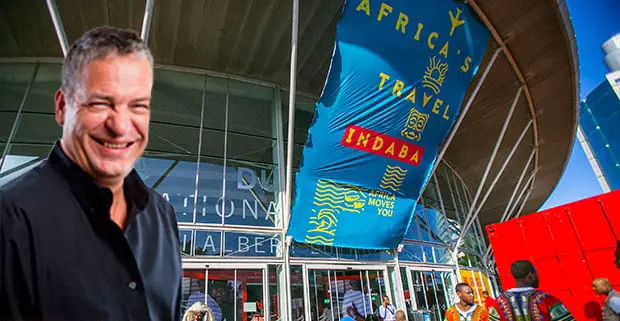Differentiation is key to Destination Marketing

What makes public relations executives believe that email blasts are worth reading – let alone using as a reliable data source? Journalists are not handmaidens to public relations departments of destinations. Yes, of course, there is a beach (unless you are Cancun and your beach eroded), yes there is blue –green water (unless you are in parts of Puerto Rico where the water is polluted), yes there is clean air (unless you are in parts of Vanuatu where the garbage is burned at dusk) and yes, there is shopping (unless you do not need to see another Gap, or Old Navy), and yes there is dining (if McDonald’s is your standard for food).
THE CHALLENGE
The challenge for destination marketers is to create and/or identify and then promote a durable destination brand that sticks to the values of the destination (whatever they are). It is most important to translate the suitably appealing emotional value of the destination’s personality to a targeted market, while offering an efficient, effective and memorable promotional message.
All destinations, regardless of size, have the same considerations if they are to develop a viable promotion campaign. The mix includes:
- Contemporary infrastructure (i.e., ports, terminals, roads, rail, power, accommodations, hospitals)
- Cultures (i.e., dining, faith – based experiences, arts and music)
- Geography (i.e., natural environment, neighbouring countries)
- History
- People
- Politics
- Safety/security
- Services
- Tourism activities (i.e., swimming, hiking, person-to-person meetings)
Short/Long Term Objectives
Through effective market research and partnerships, and by harnessing the World Wide Web, and developing astute public relations campaigns, opportunities can be created to develop a viable and sustainable image for a destination that will be memorable (at least for the short term).
Most leading destinations offer superb accommodations and attractions, high quality services and facilities and every country claims unique culture and heritage. Does the consumer want more of the same, or are they looking for a destination that offers a differentiated product?
Differentiation
It is highly probable that differentiation is more critical now than ever before. Indeed, it has become the basis for survival within a globally competitive market place where the ten major destinations attract approximately 70% of the worldwide tourism market. Despite this aggressive marketplace, the stock-in-trade of too many tourism destination promotions remains advertisements depicting blue seas, cloudless skies and endless golden beaches with a less than memorable tagline. Such “wallpaper” advertising, selling the user benefit of relaxation and a golden tan, has the effect of rendering all seaside destinations indistinguishable from one another.
What does differentiate one Caribbean or South Pacific island from its nearest neighbour; rarely sun and sand? In this marketplace what persuades potential tourists to visit (and revisit) one place instead of another is whether they have empathy with the destination and its values.
Battle Strategy
The fight for customers in tomorrow’s destination marketplace will be fought over hearts and minds–and this is where place promotion moves into the territory of brand management. Brands have social, emotional and identity value to users; they have personalities and enhance the perceived utility, desirability and quality of a product.
When consumers make brand choices about products–including destinations–they are making lifestyle statements; they are buying an image and creating an emotional relationship. Tourists use their trips as expressive devices to communicate messages about themselves to peers and observers. Therefore, as style and status indicators, destinations can promote the same consumer benefits as other more highly branded life- style accoutrements such as cars, perfumes, watches and clothes.
Travel for leisure is often a highly involving experience, extensively planned, excitedly anticipated and fondly remembered. Souvenirs, videos and photos trigger and display those experiences and are shared with friends and relatives. Logo-emblazoned merchandise and luggage labels proclaim that the individual has been there, done that, to anyone who takes a look, and actually cares.
Life-style Gauge
Choice of a holiday destination is a significant lifestyle indicator for today’s aspiration-driven consumers and the places selected to spend their increasingly squeezed vacation time and hard earned income have to be emotionally appealing with high conversational and celebrity value.
Managing a destination brand presents many challenges. Is it possible to identify the brand’s values and translate this information into a suitably emotionally-appealing personality-focused message? It has to be done since efficiently communicating the message is critical to the creation of a durable destination brand identity.
Who Leads/Follows
All destinations face unique promotion and branding challenges since they have many stakeholders and little management control. Destination managers not only have to contend with the amorphous nature of the product itself, but also with the destination marketing realities of politics and paucity.
Destination marketers have little control over the multiple sectors of their product and yet this diverse range of agencies and companies are all stakeholders in the destination brand. The mix of special interests and differing objectives includes:
- Chambers of commerce
- Civic groups
- Environmental groups and agencies
- Local and national government and their agencies
- Private sector operations
- Trade associations
Alive and Breathing
The challenge for destination marketers is to make the destination brand live, so that visitors experience the promoted brand values and feel the authenticity of a unique place. However, in this task, public sector destination marketers are often hampered by a variety of political pressures; they have to reconcile local and regional interests and promote an identity acceptable to a range of public and private sector constituencies.
Successful destination branding is about achieving a balance between applying cutting-edge public relations and advertising approaches to a marketing problem against the realpolitik landscape of managing local, regional and national interests.
Failure is Not An Option
Some of the reasons tourism destination brands fail include:
- Absence of leadership
- Conflicting objectives
- Inability to reconcile economic development and tourism marketing
- Leadership conflicts
- Other organizations’ reluctance to harmonize their marketing with the destination’s branded campaign
- Resistance to direction from the top
The short-term focus of the chief political stakeholders and funding sources also create challenges for tourism organizations: A destination brand’s lifespan is a longer-term proposition than most politicians’ careers! Marketers must stay the course and resist making hurried changes since it takes many years to establish a brand image, develop name recognition and maintain strong awareness of the destination.
In addition to confronting the politics of destination branding, most tourism organizations have small budgets with which to create global brands–and yet they are competing for consumer mind-share not just with other destinations, but also with every other global brand. While a corporate retailer such as Kohl’s (supermarket chain) spends US$340 million annually on its media, country tourism development budgets will be considerably smaller.
Tourism destinations are clearly niche players in the global marketplace and shrinking tourism budgets, rising media costs and declining tourism spending, contributes to a highly competitive promotion environment.
Outsmart, Not Outspend
In this context, it is clear that niche players have to outsmart rather than outspend the competition–and in this battle, traditional mass marketing techniques cannot effectively address the share-of-voice problem. The answer lies in creating innovative, attention-grabbing communications on a tight budget and maximizing the media pay-out. In today’s era of relationship marketing, the Internet offers a cost-efficient and effective alternative to simple mass medium for tourism organizations.
Step 1: Establish Core Values
The first stage in the process of positioning or repositioning any tourism destination brand is to establish the core values for the locale. The message must be durable, communicable and relevant for stakeholders, visitors and potential tourists.
This process must consider how contemporary and relevant the brand is to today’s tourism consumer and how it compares with its key competitors. To accomplish this goal it may be necessary to initiate a series of research projects that survey local businesses, regional economists, destinations with similar programs and previous visitors as well as potential tourists who have never actually been to the destination. This process can enable the relevant tourism managers to build brands with value and relevancy from the perspective of the stakeholders as well as in sync with consumers.
Step 2: Define Brand
The next phase requires the defining of the destination’s position in the marketplace: what does the country represent; how can this be translated into brand personalities?
As Maurice Saatchi, the founder and partner of M&C says: “As the world becomes increasingly “manufactured,” the world’s nations have become more and more homogenous. It’s become almost impossible to find meaningful differentiation.” Saatchi finds that managers have to overcome both the politics and the paucity challenge by outsmarting rather than outspending their competitors. It takes patience to establish brand reputations and building a powerful destination brand is a long-term effort, which more often than not yields incremental and not exponential results.
Brand Winners
Destinations must have a vision which is founded on intensive stakeholder, consumer and competitor research and is expressed with care and discipline in everything that communicates the brand’s personality. Once the brand personality has been identified, marketers must have the courage to stay with the brand’s essence. While refinements may be made to show how the values are expressed in the brand architecture, the essentials of the brand personality should remain consistent. The secret is to continuously evolve and enrich the original brand profile, building on the initial strengths to reinforce their appeal and to broaden the market, combining the “soul” of the brand with a point of difference that no other destination in the world possesses.
Through branding, promotion and PR, a country brand is not merely a rational marketing activity but a political act that can increase and enhance local pride. Tourism offers communities the potential to build both an identity and a viable economy, and ultimately to attract significant public and private attention.
Leader or Follower
As government financing continues to be squeezed it is critical that tourism organizations maintain their roles as coordinators of promotional resources. Unless they take command of both branding and product development in a changing and confused stakeholder market, the large operators and transportation companies will simply promote what they believe is the most appealing product.
This will be both at the expense of small players within the industry and the dilution of the national brand identity that the tourism office has sought to build. Visitors will select a destination because of one hotel, or one attraction, never leaving the gated community to explore the country and its resources (i.e., Disney). All revenue stays within the confines of the hotel operation and, except for wages and local hotel spending, the infusion of foreign capital does not benefit local entrepreneurs or the indigenous people.
Own Your Niche
In a world where a handful of major countries attract almost three quarters of international tourist arrivals, most destinations will at best be niche players competing on the margins. They will be reliant on effective, targeted branding strategies that have the potential to squeeze maximum value from their small budgets. This is difficult but by no means an impossible task, if the power of industry partners and non-traditional media such as the Internet can be harnessed.
Multiple-media portals cannot be ignored as they interactively engage visitors pre-trip and provide direct marketing opportunities for relationship building, which can be resurrected and sustained post-trip. The potential of such opportunities deserves much more attention from public relations professionals, in-house public relations employees and destination managers (public and private).
Market Segmentation
It has become increasingly important for media representatives to leave their desks, shut off their computers, and go into the marketplace to actually dialogue with journalists and consumers, sharing their insights into the “soul” of the destination, and pitching the story that will be attractive to the target market(s). Journalists are not handmaidens to those tasked with public relations assignments. It would be to everyone’s advantage if target markets were clearly codified, and marketing campaigns provided information specifically for the identified segment.
Now That I Know You
What happens after the story is published, what happens after the tourist returns home? The follow-up and follow-through is the continued responsibility of the destination/marketing manager. Ongoing two-way, meaningful communication is the only way to sustain the product and market share.
Continued engagements require nurturing; otherwise the programme is a “one-off” and has not developed into a sustainable and healthy relationship – creating yet another waste of limited resources.
This story was first shared with members of the International Council of Tourism Partners (ICTP). For more information visit: http//:www.tourismpartners.org
About the author: Dr. Elinor Garely is the Editor in Chief of www.TourismExecutives.com
Prior to moving to the publishing side of the destination/travel/tourism/hospitality industry I headed up the PR/Marketing departments for Playboy Clubs and Hotels (NYC office) and the Copacabana. Every story, every promotion, every phone call demanded that I carefully think through the profile of the publication, the personality of the journalist and deadlines. I knew that on a good day I might get 3-4 seconds for the journalists to listen to my pitch or read my press release. If I did not get to the point within this time frame I could expect a click on the phone or toss of the paper into the trash basket.
When I thought I had a really good story I would invite the journalist to lunch or dinner. If I got a “yes” to my face-to-face request, I was over the moon. Did the agreement to talk with me over a drink mean that I was going to get a story? Absolutely not! In this business there are “no guarantees;” this is the reason it is called public relations and not advertising! Want to control the message? Buy some space!



